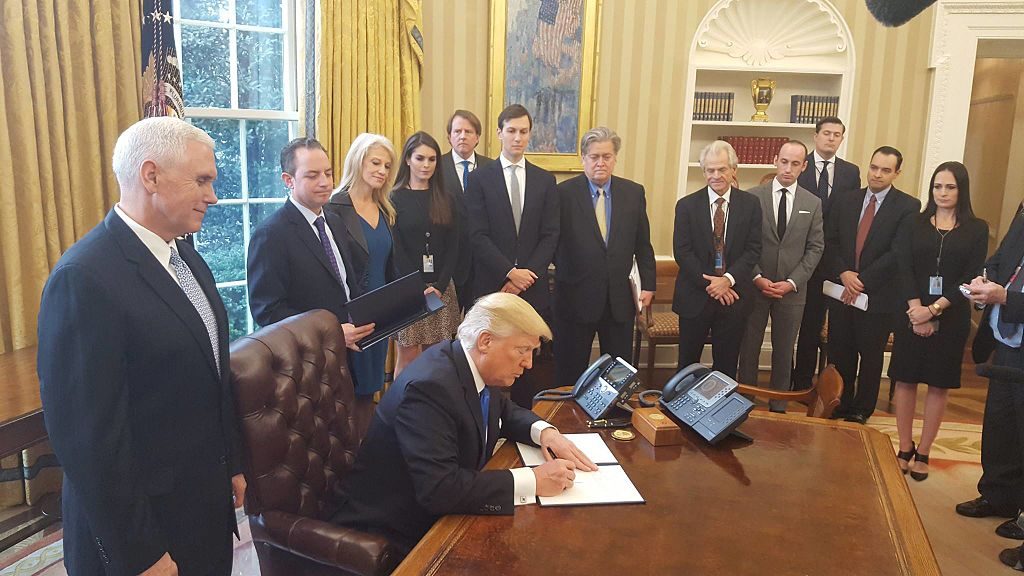“We’re going to have a very, very strict ban,” President Trump declared to reporters on January 28th, the day after he signed an executive order which would impose a temporary ban on all immigrants and nonimmigrants from seven Muslim-majority countries—Iraq, Iran, Libya, Somalia, Sudan, Syria, and Yemen—attempting to enter the United States. Much confusion and controversy has already arisen concerning the extent of the ban’s enforceability. But often neglected in this debate is the extent to which it may be benefiting radical groups like ISIS. By alienating the civilians from these countries and adopting an adversarial stance towards Muslims writ large, President Trump may actually be facilitating extremist recruitment efforts.
Since terrorist organizations usually have much less access to capital and manpower than the nation-states they target, they tend to adopt strategies to compensate for this imbalance. One of these key strategies is that of provocation. As defined by political scientists and international relations theorists Andrew H. Kydd and Barbara F. Walter, this strategy “is an attempt to induce the enemy to respond to terrorism with indiscriminate violence, which radicalizes the population and moves them to support the terrorists.” In other words, terrorists often commit horrendous acts not only expecting, but wanting their targets to overreact.
Although radicals from these seven countries are obviously affected by the president’s ban, so are innocent people, who will now see the administration—and perhaps the U.S. as a whole—in a much worse light. This, in turn, bolsters the recruitment efforts of Islamic terrorists, who might attempt to radicalize those who feel disaffected by the ban and the rhetoric surrounding it.
If the current administration embraces an “us versus them” mentality—with “them” being all citizens from these seven countries—then it is reasonable to predict that these governments and their people might begin thinking of the United States as an enemy. Indeed, there is evidence the United States’ drone bombing programs—which often result in the death of innocents—have had exactly that effect. Former President Obama has admitted that the program resulted in multiple civilian casualties, and some estimates put the number of innocent civilians killed at many times the casualties suffered by terrorists. This, in turn, makes it easier for radical groups such as ISIS to justify their attacks against Western nations to potential recruits.
Examples of this sort of blowback surfaced as early as January 2016. Al-Shabaab, a Somali al-Qaeda affiliate, released a recruitment video that contained excerpts from a speech of then-presidential-candidate Donald Trump. In it, terrorists claim “tomorrow, [America] will be a land of religious discrimination and concentration camps.
The frustration of citizens from the banned countries is exacerbated by the fact that between 1975 and 2015, zero people were killed on U.S. soil by their nationals. Although the ban affects millions, a total of 17 people from Iran, Sudan, Somalia, Iraq and Yemen have been convicted of attempting or executing terrorist attacks in the United States during this period, with no Syrian or Libyan nationals convicted in the past 40 years.
President Trump’s imposition of a ban is far from an ideal long-term, or even short-term, solution to the problem of Islamic terror. When terrorists employ the provocation strategy, the best response is one that imposes costs on the terrorists with as little collateral damage as possible. Considering how far-reaching President Trump’s executive order is, it clearly fails to meet this criterion. If the administration does not bother to distinguish between civilians and radicals, it is effectively alienating the millions of innocents from these seven countries, and in that sense, perhaps even indirectly assisting the recruitment efforts of radical groups.
Image source: Wikipedia/The White House Facebook page
